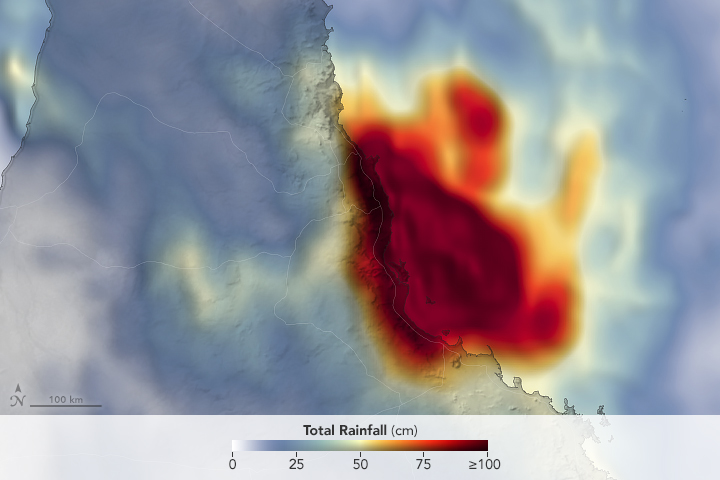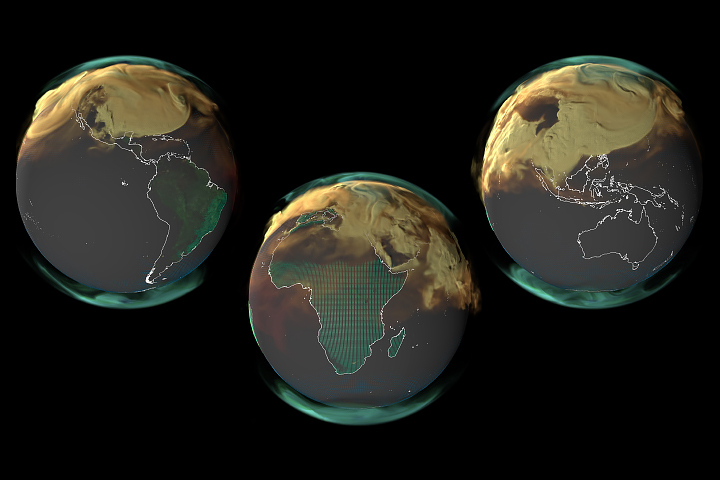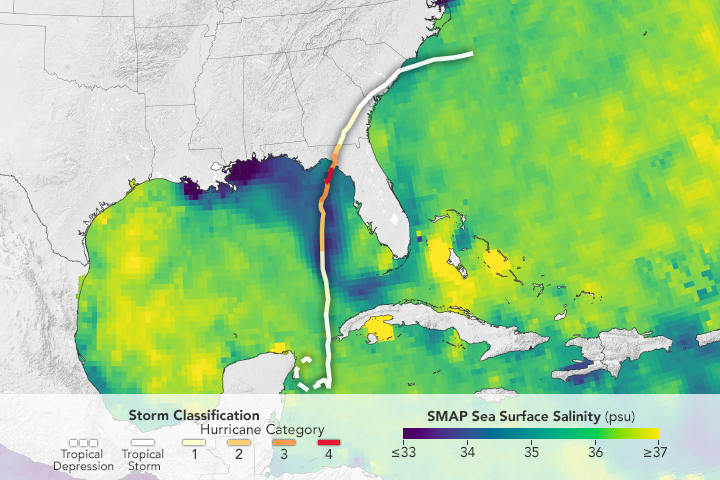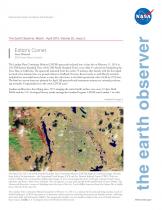



Recent Imagery
You will be directed to the NASA Visible Earth webpage when you select Images by Mission below, or click on the images at right that are randomly generated to represent four out of all possible topics.
The Earth Observer has a new look! Visit the NEW Earth Observer website.
The Earth Observer: Mar - Apr, 2013
In This Issue
Click title below to view page
- Editor’s Corner Front Cover
- Feature Articles
- LDCM: Continuing the Landsat Legacy4
- NASA Ups the TEMPO on Monitoring Air Pollution10
- Working with NASA’s HDF and HDF-EOS Earth Science Data Formats16
- PODEX Experiment to Reshape Future of Atmospheric Science20
- Meeting/Workshop Summaries
- Summary of the 2013 NASA Land Cover/Land Use Change Regional Science Meeting, South India24
- ASTER Science Team Meeting Report31
- ESIP Federation Meeting36
- 2012 Gregory G. Leptoukh Online Giovanni Workshop39
- CloudSat, CALIPSO, and EarthCARE Science Workshop41
- In The News
- NASA Satellites Find Freshwater Losses in Middle East48
- Landsat 5 Sets Guinness World Record For “Longest Operating Earth Observation Satellite”50
- Regular Features
- NASA Earth Science in the News52
- NASA Science Mission Directorate—Science Education Update54
- Science Calendars55
Editor’s Corner
Steve Platnick, EOS Senior Project Scientist
The Landsat Data Continuity Mission (LDCM) spacecraft rocketed into a clear sky on February 11, 2013 at 1:02 PM Eastern Standard Time (10:02 AM Pacific Standard Time) on an Atlas V rocket from Vandenberg Air Force Base in California. The spacecraft separated from the rocket 79 minutes after launch with the first signal received a few minutes later at a ground station in Svalbard, Norway. Recent (early-to-mid-March) activities included two successful ascent burns to raise the orbit closer to the final operational orbit of 438 mi (705 km). The final two ascent burns are planned for April. All spacecraft and instrument systems are currently performing normally. Congratulations to the entire LDCM team! Landsat satellites have been flying since 1972, imaging the entire Earth’s surface once every 16 days. Both NASA and the U.S. Geological Survey jointly manage the Landsat Program. LDCM joins...
Read more...

